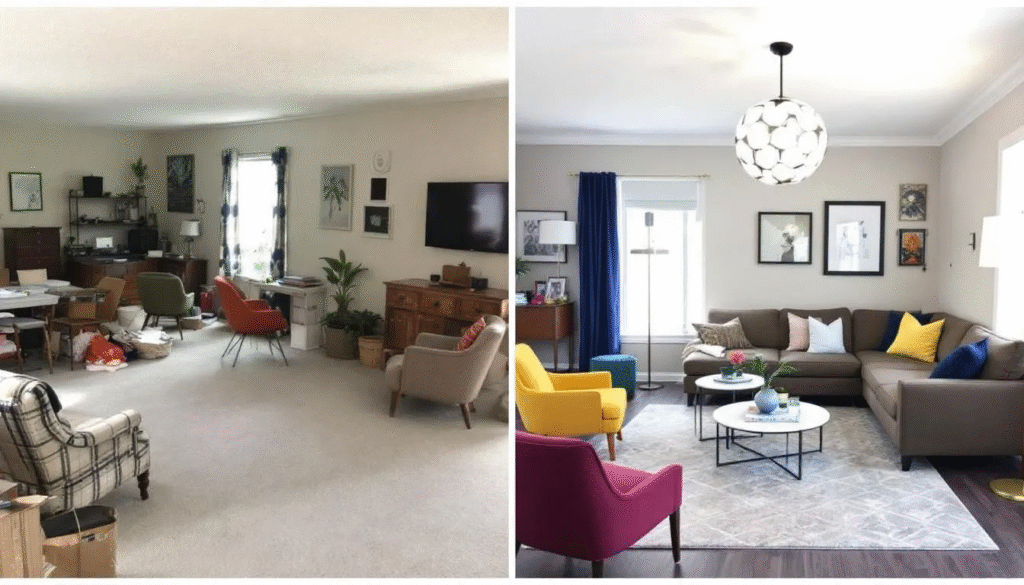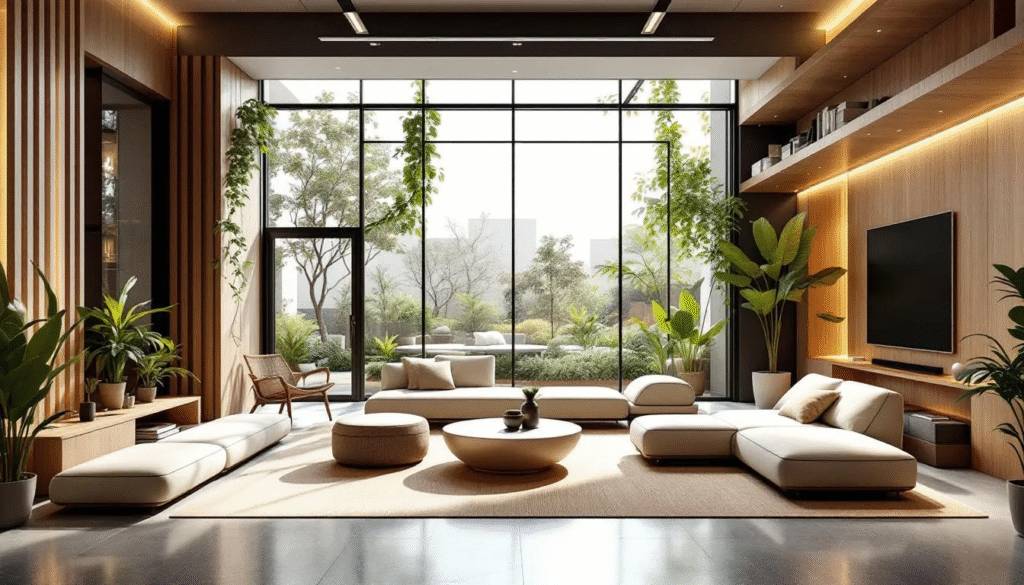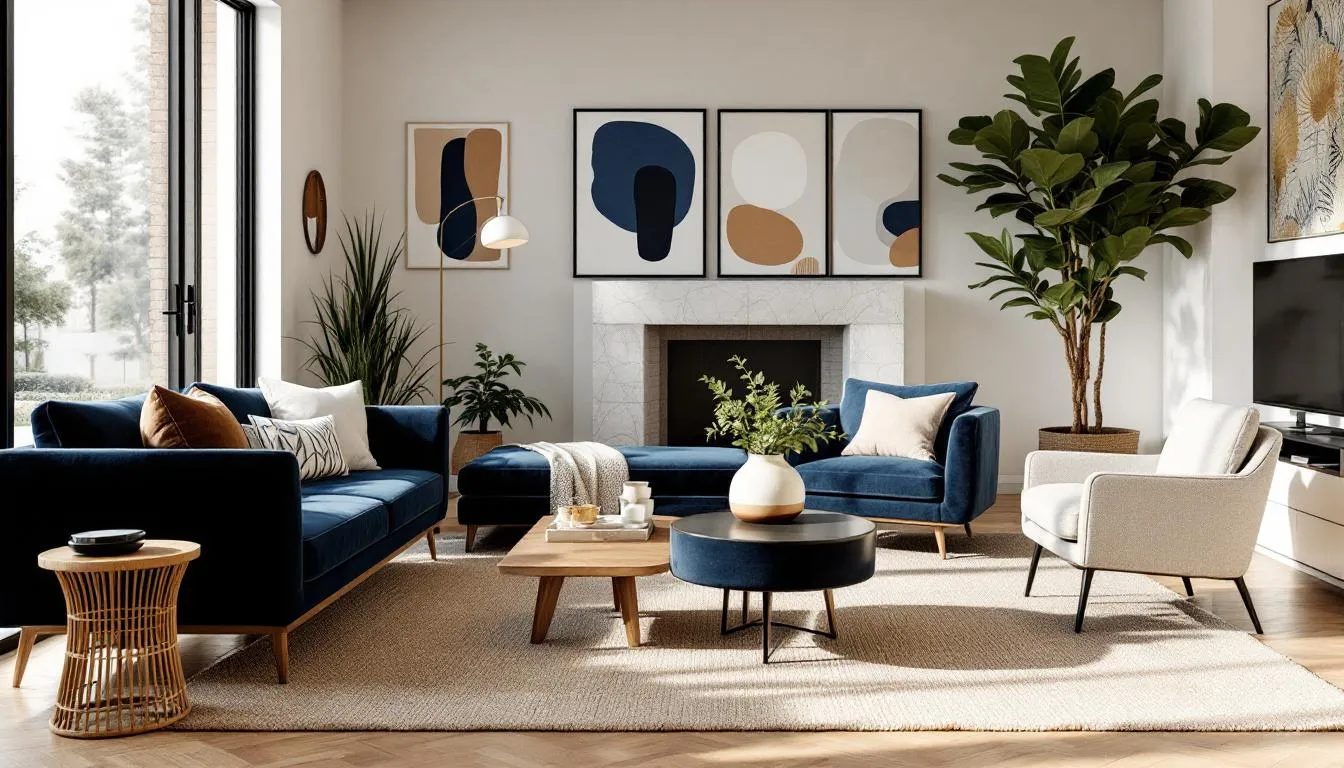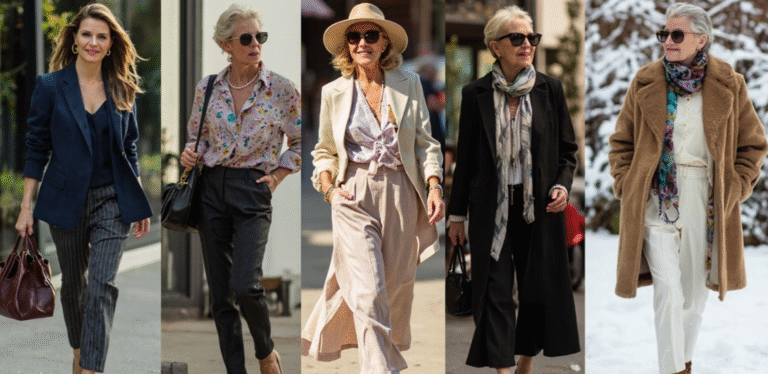Furniture Aesthetics: A Complete and Helpful Guide to Beautiful and Functional Design
A practical guide to furniture aesthetics—styles, color, texture, proportion, and tips—for spaces that look great and actually work.
If you’ve ever stood in a furniture store squinting at a sofa like it’s an SAT question, hi, I’ve been there. I once spent three hours wandering a showroom, falling in love with pieces that—let’s be honest—would have bullied my living room into submission. Gorgeous? Absolutely. Practical for my space? Not so much.
That’s the quiet truth about furniture aesthetics: the best rooms aren’t just pretty or has the most unique interior design styles. They’re livable. They’re where form meets function, style meets reality, and your shoulders drop the second you walk in. Think less “Pinterest museum,” more “I can actually put my feet up here.”
Quick tip before we dive in: take photos of your room in morning and evening light. Keep them handy when you shop. Showrooms are charming liars. Your camera tells the truth.
In this complete guide, we’ll unpack the core elements—color, texture, proportion, and materials—explore popular styles (minimalist, maximalist, mid-century modern, industrial), and talk about how to blend aesthetics with real-life functionality. Along the way, I’ll share what’s worked for me, what I’d never do again, and a few tiny tweaks that make a surprisingly big difference. Ready?
What Are Furniture Aesthetics, Really?
Furniture aesthetics are the look, feel, and flow of your space—how pieces play together and how they make you feel. Calm? Energized? Cozy? Irritated because the coffee table is gorgeous but too far for your actual coffee? That’s aesthetics doing push-ups in the background.
It’s all a conversation of your personal style: your sofa vs. your walls, your floors vs. your lighting, that arched doorway vs. your modern lamp. Nothing lives alone. Historically, we’ve swung from ornate to streamlined—think gilded carvings to Bauhaus logic—and today’s best interiors borrow from both: a little warmth, a lot of function, and just enough personality to make it yours.
Do this: pick three words you want your space to feel like. Mine are calm, warm, uncluttered. I use them like a pocket compass. If a piece doesn’t move me toward those words, I walk away (politely and with financial restraint).
The Four Pillars of Furniture Aesthetics in Interior Design

Color and Finish: Your Mood Director
Color isn’t background—it’s the mood. Warm tones (terracotta, tobacco, deep greens) feel cozy. Cool tones (soft gray, misty blue) focus the mind. Bold hues shine as accents—unless you’re going maximalist, then toss confetti with confidence.
I once painted my office a bright orange for “motivation.” Great decision for… about two weeks. Then my brain started sprinting at 10 p.m. Color psychology is real—but always context-dependent.
Current lean-ins:
- Neutrals that play nice (ivory, greige, pebble gray)
- Earth tones (ochre, olive, cedar brown)
- One bold statement (e.g., cobalt lounge chair)
- Monochrome layers (same color family, varied depth)
Finish matters, too:
- Matte = understated, modern
- Satin = soft sheen, versatile
- High-gloss = luxe but unforgiving
- Natural/distressed wood = effortless character
Pro move: test peel-and-stick paint samples and fabric swatches on the actual wall behind where furniture will live. Check them morning, afternoon, and evening. The “perfect beige” at noon might moonlight as pale green at dusk.
Texture and Materials: Depth You Can Feel
Texture makes a room feel alive. Furniture pieces with real wood has warmth you can feel. Leather develops character. Woven fabrics soften the edges. Engineered materials aren’t the enemy—plywood allows graceful curves, MDF delivers a glassy paint finish, and performance fabrics save your sofa from your dog and your salsa.
Aim for at least three textures per room. Easy combos:
- Wood + metal + boucle
- Glass + linen + matte ceramic
- Leather + wool + brushed brass
Small contrast, big payoff: sleek glass coffee table + chunky knit throw; velvet pillow + raw steel lamp; smooth marble + rough jute rug.
Shape and Proportion: The Silent Deal-Maker
Shapes speak. Curves feel friendly; sharp angles feel modern. But proportion is where rooms win or lose. I once bought a sectional that was perfect—if my living room were a gymnasium. Visual weight matters as much as size: a dark walnut credenza “reads” heavier than a pale ash one of the same dimensions.
Before buying anything big, tape the footprint with painter’s tape. Walk around it. If it’s tight now, the real piece will feel tighter.
Guidelines:
- Coffee table height ≈ sofa seat height (give or take 2 inches)
- Coffee table length ≈ 2/3 sofa length
- Dining seat height: 17–19 inches; table height: ~29–30 inches
- At least 30 inches of walkway clearance; 36 inches if it’s a main path
Material Quality: What Lasts vs. What Lies
Materials are more than looks; they’re lifespan. Solid wood can be refinished. Veneer is great if it’s high-quality and well-applied. Cheap hardware will betray you in year two. If you’re investing, prioritize frames (sofa, dining table), then fabrics, then accents.
I can personally say that the best thing you can do right now is to get the kind of materials that are bang for the buck. Consider those vintage furniture with the traditional style in it. Yes it is old, but it is still intact. If well preserved and taken care of, they will stand the test of time and would even look pristine.
Watch for:
- Tight, even stitching on upholstery
- Dovetail joints on drawers (a good sign)
- Kiln-dried hardwood frames
- Fabrics with a Martindale rating suitable for daily use (30,000+ for heavy household)
Popular Furniture Aesthetic Design Styles (And How to Make Them Sing)
Minimalist Aesthetics: Intentional and Calm
I am seeing more of these everyday in the modern designs. More and more people are changing from traditional interior design style to a modern interior design. Think clean lines, restrained color, hidden storage. It’s not about owning nothing; it’s about owning the right things. Without warmth, minimalist rooms can feel like a dental waiting room—crisp but emotionally chilly. Add soul with natural materials and soft textures.
Try some key feature like:
- Platform bed in oak, linen headboard, wool rug
- Floating shelves with curated (not crammed) items
- One sculptural lamp that feels like art
If it feels sterile, add one warm element per zone: a jute rug, linen drapes, a walnut side table.
Maximalist Aesthetics: Charm with a System
Maximalism is layers—patterns, books, textures, color—with a plan. The best maximalist rooms don’t shout; they hum. Tie it together with a unifying thread: a color family, consistent metal finishes, or repeating shapes (arches, circles, fluting).
Use the 60/30/10 color rule:
- 60% base (walls, big furniture)
- 30% secondary (rugs, curtains)
- 10% accent (art, pillows, ceramics)
Think jewel-toned velvet sofa, vintage rug, gallery wall—grounded by a consistent palette.
Mid-Century Modern Aesthetics: Optimism, Streamlined
Tapered legs, warm woods (walnut, teak), honest materials. Classic pieces like the Eames Lounge Chair, Noguchi table, and credenzas with clean fronts. Keep it from feeling “themed” by mixing in contemporary art and updated lighting.
Winning pairing:
- Walnut credenza + abstract oversized art + linen drum shade floor lamp
Industrial Aesthetics: Raw and Refined
Exposed steel, reclaimed wood, concrete—balanced with warmth. The trick is contrast: hard + soft, cool + warm.
Use:
- Warm bulbs (2700–3000K) and dimmers
- Leather cushions on metal chairs
- Woven throws, textured rugs, and layered lighting
How to Balance Aesthetics with Functionality (So You’ll Actually Use the Room with a Functional Furniture in it)

Let’s ban the beautiful chair no one sits in. Function first doesn’t mean “boring”; it means “you’ll use it daily without curse words.”
- Ergonomics matter: dining chairs where feet touch the ground; sofas with real back support; task lighting that doesn’t cast a shadow on your work.
- Storage with stealth: ottomans with compartments, coffee tables with drawers, sideboards that hide charging stations.
- Multi-functional heroes: extendable dining tables, sleeper sofas, nesting tables, desks that convert from console to workspace.
Do this for one week: jot how you actually use each room. Eat in the living room? Work at the dining table? Host movie nights more than dinner parties? Let the truth steer your choices.
Room-by-Room: Practical Aesthetic Playbooks
Living Room Aesthetics
- Anchor with a sofa that fits the room and your lifestyle (family movie nights? deep seats; frequent guests? structured seating).
- Float the sofa when possible—pulling it off the wall improves flow. A narrow console behind it adds lighting and a landing spot.
- Choose one statement piece (bold coffee table, sculptural chair) and let other items support it.
- Layer lighting: overhead + floor + table + accent. Natural light still does the heavy lifting, so avoid blocking windows.
Layout cheat codes:
- Conversation zones: seats roughly 8–10 feet apart max
- Rug sizing: front legs of major pieces on the rug; err larger, not smaller
Bedroom Aesthetics
- Pick a bed that sets the tone: upholstered (soft), wood (warm), metal (edgy). Quality slats or a solid platform = better sleep and less squeak.
- Nightstands don’t have to match. Tie them together with shared material or hardware color.
- Keep colors calm: muted blues, earthy neutrals, soft greens.
- Sconces or plug-in pendants free up space and look tailored without hiring an electrician.
Little luxuries:
- Soft-closing drawers
- Blackout curtains layered over sheers
- One tactile throw at the foot of the bed
Dining Room Aesthetics
- Table personality drives the room: farmhouse wood (casual warmth), glass (modern, airy), stone (elevated, durable).
- Chairs = comfort first. Upholstered for long dinners, wood/metal for easy cleaning. If mixing, unify with color or material.
- Tight rooms: pedestal bases and armless chairs save inches and frustration.
Lighting:
- Pendant centered 30–34 inches above table
- Dimmer always—dining rooms live or die by mood
Tips for Cohesive Interior Design Style (Across the Whole Home)
- Build a house palette: 4–6 colors (two neutrals + three accents). Use in varying ratios from room to room. Instant flow.
- Invest in anchors (sofa, dining table, bed). Layer in budget-friendly accents (side tables, pillows, art).
- Repeat on purpose: a brass finish that shows up in three rooms, a consistent wood tone from floor to furniture, a recurring curve in mirrors and lamps.
- Mood board everything. Seeing items together prevents “great alone, chaotic together” purchases.
- Add personal story: heirlooms, travel art, handmade ceramic bowls. This turns “nice” into “yours.”
Different Aesthetics That Are Budget-Friendly (That Don’t Look Budget)
- Reupholster quality frames; switch to performance fabric if life is messy (and life is often messy).
- Refinish wood: sand, stain, oil, or paint. It’s a weekend project with decade-long benefits.
- Hardware swap: new pulls and knobs = instant glow-up for dressers and cabinets.
- Style with intention: pillows, rugs, lamps, and art can refresh a room seasonally without replacing big pieces.
- Shop secondhand: estate sales, consignment, Facebook Marketplace. Set saved searches (e.g., “walnut dresser,” “tapered leg chair,” “marble coffee table”) and turn on alerts. The good stuff disappears fast.
Pro hack: if you find a great used piece with so-so hardware, factor in a $40 hardware swap—it’s the cheapest transformation.
Common Furniture Aesthetic Mistakes (And Fixes)
- Ignoring scale: measure, tape it out, double-check doorways and elevators. Measure ceiling height too—tall cabinets need breathing room.
- Choosing looks over comfort: if you can’t relax on it, you won’t use it.
- Style soup: stick to the 80/20 rule—one dominant style, one supporting accent style. Tie with color/material/shape.
- Neglecting lighting: rooms need layers and warm color temperature, not just a single overhead light.
- Buying full matching sets: coordinated, yes. Identical, no. You want a conversation, not a choir in unison.
- Blocking flow: leave at least 30 inches for pathways; 36 inches for busy pass-throughs.
Future Trends in Furniture Aesthetics (That Are Worth Your Time)

- Sustainability as standard: FSC-certified wood, low-VOC finishes, recycled materials, and modular designs that evolve with you.
- Softer silhouettes: curves, scallops, rounded edges—more human, less harsh.
- Bold color with restraint: rich jewel tones and saturated accents in rooms that still breathe.
- Tech that blends: hidden charging, adjustable-height tables, cord management that doesn’t ruin the vibe.
- Craft and character: artisan-made pieces, visible joinery, and patina-friendly materials that age with grace.
If you’re buying new, look for certifications (FSC), finishes labeled low- or zero-VOC, and repair-friendly construction (replaceable covers, modular parts).
Evidence corner: A 2023 SFC (Sustainable Furnishings Council) survey found over 70% of consumers prefer sustainably made furniture when cost and style are comparable, a trend mirrored by major retailers expanding eco-conscious lines. And research on indoor environments from Harvard’s T.H. Chan School of Public Health highlights the benefits of low-VOC materials for air quality and cognition—choices that look good and literally help you think better. Tie that to your home office? Yes, please.
Mixing Aesthetic Elements Without the Chaos
Want to blend mid-century with industrial? Minimalist bones with maximalist art? You can—and it’s often the magic.
- Keep one constant: wood tone, metal finish, or color family.
- Vary shape vocabulary with intention: curvy sofa + angular coffee table + round mirror to bridge the two.
- Anchor with neutrals, then let accents roam. Your big pieces are the steady friends; the accessories are the fun ones who tell great stories at dinner.
Personal note: I once paired a lean linen sofa (minimalist) with a vintage Persian rug (maximalist) and a ribbed glass coffee table (modern). The throughline? Warm neutrals and a hit of brass. It shouldn’t have worked. It did. And I smile every time I walk past it.
Frequently Asked Questions
How do I know if my furniture aesthetics match my style?
- Make a mood board with only pieces you’d actually buy. Compare to your current space. If walking in the door feels like a little exhale, you’re aligned.
Can I mix different styles in one room?
- Absolutely. Use the 80/20 rule. Pick one primary style and sprinkle in a secondary style. Connect them with color, materials, or shapes.
What’s the difference between trendy and timeless?
- Timeless uses classic proportions, quality materials, and simple shapes that age well. Trendy plays with bold colors or quirky silhouettes that might date quickly. Invest in timeless anchors; rotate trends through pillows, throws, and art.
How much should I spend on aesthetic furniture?
- Spend more where you sit, sleep, and gather (sofa, mattress, dining table). Think cost-per-use over years, not sticker price today. Mix high-low everywhere else.
How do I maintain finishes and fabrics?
- Follow care guides, use coasters (future you says thanks), rotate rugs and cushions to even wear, condition leather quarterly, oil wood 1–2 times a year, and keep direct sun off delicate fabrics.
Quick care calendar:
- Quarterly: leather conditioning, cushion rotation
- Biannual: wood oiling, rug flip/rotate
- Annual: professional clean for high-traffic upholstery
Final Thoughts
Furniture aesthetics aren’t about copying a showroom. They’re about creating a place you actually love to live in—where the sofa supports your movie nights, the dining table fits your people, and your style comes through without shouting. Take your time. Measure twice. Trust your three-word compass. The right pieces don’t just look good; they make your days easier and your nights calmer.
When I finally stopped chasing “perfect” and started chasing “this feels right for how I live,” everything clicked. That’s the sweet spot—beautiful and functional, with a little personality seasoning on top. Now go make something lovely. And yes, take the tape measure. It’s the unsung hero of great design.







